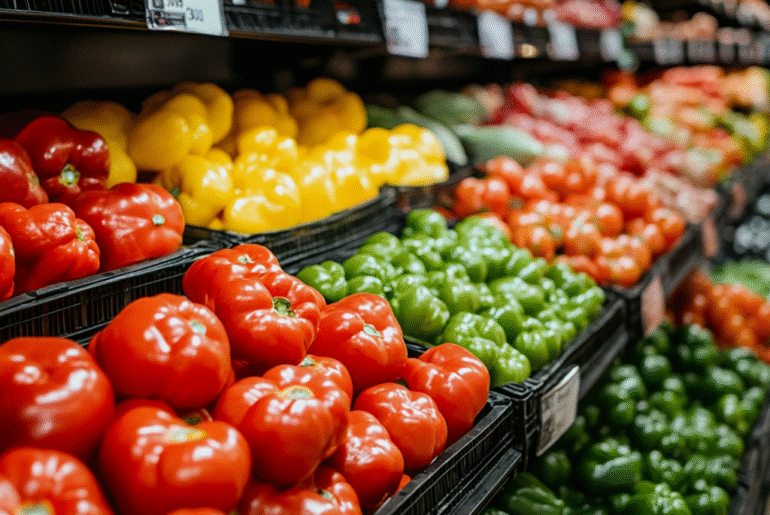This article may contain references to products or services from one or more of our advertisers or partners. We may receive compensation when you click on links to those products or services. Nonetheless, our opinions are our own.
The information presented in this article is accurate to the best of our knowledge at the time of publication. However, information is subject to change, and no guarantees are made about the continued accuracy or completeness of this content after its publication date.
It can be hard to figure out how to get help from the government, especially if you’re new to managing your money. The Supplemental Nutrition Assistance Program, or SNAP, is one of the most important resources for low-income families in the United States. People often get the wrong idea about SNAP, but it is an important support system that helps families buy healthy food and stay healthy.
With changes coming and more talk about food security, it’s more important than ever to know how SNAP works, who can get it, and what benefits it offers. We’ll discuss SNAP eligibility and rule changes. It gives people the information they need to make smart choices and get the help they need.
- What is SNAP?
- Eligibility Criteria for SNAP Benefits
- What Can Be Purchased with SNAP Benefits?
- Benefits of SNAP: Supporting Nutrition and Communities
- Recent Changes and Developments in SNAP
- How to Apply for SNAP Benefits
- Common Myths and Facts About SNAP
- Conclusion
- Frequently Asked Questions
- Recommended Reads
What is SNAP?
SNAP, short for the Supplemental Nutrition Assistance Program, is a federal initiative that offers financial assistance to eligible low-income individuals and families for purchasing food. Administered by the U.S. Department of Agriculture (USDA) and implemented at the state level, SNAP is designed to reduce hunger and improve nutrition across communities.
How SNAP Benefits Are Distributed
- SNAP benefits are provided through an Electronic Benefits Transfer (EBT) card, functioning similarly to a debit card.
- The EBT card can be used at authorized grocery stores, farmers markets, and select online retailers.
- Benefits help families purchase eligible food items, including fresh produce, dairy products, grains, and meats.
Eligibility Criteria for SNAP Benefits
Eligibility for SNAP is determined by federal and state guidelines, which consider income, resources, and household composition. Factors include:
1. Income Limits
Income eligibility is based on gross and net income thresholds, which vary depending on household size. The following table provides examples of 2025 federal income limits:
| Household Size | Gross Monthly Income Limit | Net Monthly Income Limit |
|---|---|---|
| 1 | $1,580 | $1,215 |
| 2 | $2,137 | $1,644 |
| 3 | $2,694 | $2,072 |
| 4 | $3,250 | $2,500 |
Note: Limits may vary by state. Consult local SNAP offices for state-specific guidelines.
2. Resource Limits
- Households without elderly or disabled members must have countable resources under $2,750.
- Households with an elderly (60+) or disabled member must have resources under $4,250.
- Resources include cash, bank accounts, and other liquid assets; primary residences and most retirement accounts are excluded.
3. Work Requirements
- Able-bodied adults without dependents (ABAWDs) aged 18–49 must meet work requirements to receive benefits beyond three months in a three-year period.
- Participants may need to register for work, accept suitable employment, or participate in employment and training programs.
What Can Be Purchased with SNAP Benefits?
SNAP benefits can be used to buy most food items intended for home preparation and consumption. However, certain purchases are restricted.
Eligible Items
- Fruits and vegetables
- Meat, poultry, and fish
- Dairy products
- Breads and cereals
- Seeds and plants to grow food at home
Ineligible Items
- Alcoholic beverages
- Tobacco products
- Vitamins, supplements, and medicines
- Hot prepared foods
- Non-food items such as cleaning supplies or pet food
Benefits of SNAP: Supporting Nutrition and Communities
SNAP offers more than just a food budget; it serves as a foundation for improved public health and economic stability:
- Nutrition Security: SNAP increases access to healthier food options, reducing the risk of malnutrition and diet-related illnesses.
- Food Insecurity Reduction: Participation in SNAP has been linked to decreased rates of food insecurity among families and children.
- Economic Impact: SNAP dollars spent at local grocery stores and markets stimulate economic activity and support community businesses.
Voted "Best Overall Budgeting App" by Forbes and WSJ
Monarch Money helps you budget, track spending, set goals, and plan your financial future—all in one app.
Get 50% OFF your first year with code MONARCHVIP
Recent Changes and Developments in SNAP
The program continues to evolve to better meet the needs of participants. Recent and ongoing updates include:
- Benefit Adjustments: Increases in SNAP allotments have been implemented to keep pace with rising food prices and cost of living.
- Online Purchasing Expansion: More states now allow SNAP recipients to use EBT cards for online grocery orders, offering greater convenience and accessibility.
- Policy Discussions: Lawmakers continue to debate changes to eligibility, benefit levels, and work requirements, which could affect access for millions of Americans.
How to Apply for SNAP Benefits
Applying for SNAP is a straightforward process, but preparation is key:
- Visit the Official SNAP Website: Access state-specific portals for information and applications.
- Gather Documentation: Required documents typically include proof of identity, income, housing costs, and utility expenses.
- Complete the Application: Submit online, by mail, or in person at local SNAP offices.
- Participate in an Interview: Applicants are often contacted for an interview to verify details and determine eligibility.
- Receive Determination: Applicants are usually notified of their eligibility within 30 days.
Common Myths and Facts About SNAP
Clearing up misconceptions helps reduce stigma and encourages eligible households to apply:
| Myth | Fact |
|---|---|
| SNAP is only for the unemployed. | Many employed individuals and working families qualify based on income and expenses. |
| SNAP can be used to buy anything. | SNAP benefits are limited to approved food items; non-food products are ineligible. |
| Using SNAP is something to hide. | SNAP participation is common and supports millions of Americans facing tough times. |
Conclusion
SNAP plays an essential role in supporting families, improving nutrition, and strengthening communities across the United States. By offering assistance with purchasing healthy food, SNAP not only reduces hunger but also helps recipients lead healthier, more stable lives. Understanding SNAP eligibility, benefits, and recent changes empowers individuals and families to access the resources they need. Staying informed about program updates ensures that households can adapt and continue to receive support in times of need. As economic conditions shift, SNAP remains a cornerstone of America’s commitment to public health and economic resilience, offering a safety net that helps people move from survival to stability.
Frequently Asked Questions
What is SNAP?
SNAP, the Supplemental Nutrition Assistance Program, provides financial assistance to low-income individuals and families for purchasing food. It is funded federally and administered at the state level.
Who qualifies for SNAP benefits?
Eligibility typically depends on household income, size, and expenses. Applicants must meet federal and state-specific guidelines and be U.S. citizens or legal residents.
How are SNAP benefits distributed?
Benefits are loaded monthly onto an Electronic Benefits Transfer (EBT) card, which works like a debit card at authorized retailers.
What foods can be purchased with SNAP benefits?
SNAP benefits can be used to buy most foods intended for home consumption, including fruits, vegetables, meats, dairy products, and breads. Hot prepared foods and non-food items are not eligible.
What recent changes have affected SNAP?
Recent developments include increased benefit amounts, expanded online purchasing options, and ongoing discussions about work requirements and program accessibility.
Where can information about applying for SNAP be found?
Official information is available through the USDA SNAP website or local state agencies. State-specific portals offer guidance and online applications.

Reviewed and edited by Albert Fang.
See a typo or want to suggest an edit/revision to the content? Use the contact us form to provide feedback.
At FangWallet, we value editorial integrity and open collaboration in curating quality content for readers to enjoy. Much appreciated for the assist.
Did you like our article and find it insightful? We encourage sharing the article link with family and friends to benefit as well - better yet, sharing on social media. Thank you for the support! 🍉
Article Title: What Are SNAP Benefits and What’s Changing
https://fangwallet.com/2025/08/11/what-are-snap-benefits-and-whats-changing/The FangWallet Promise
FangWallet is an editorially independent resource - founded on breaking down challenging financial concepts for anyone to understand since 2014. While we adhere to editorial integrity, note that this post may contain references to products from our partners.
The FangWallet promise is always to have your best interest in mind and be transparent and honest about the financial picture.
Become an Insider

Subscribe to get a free daily budget planner printable to help get your money on track!
Make passive money the right way. No spam.
Editorial Disclaimer: The editorial content on this page is not provided by any of the companies mentioned. The opinions expressed here are the author's alone.
The content of this website is for informational purposes only and does not represent investment advice, or an offer or solicitation to buy or sell any security, investment, or product. Investors are encouraged to do their own due diligence, and, if necessary, consult professional advising before making any investment decisions. Investing involves a high degree of risk, and financial losses may occur including the potential loss of principal.
Source Citation References:
+ Inspo
There are no additional citations or references to note for this article at this time.












































